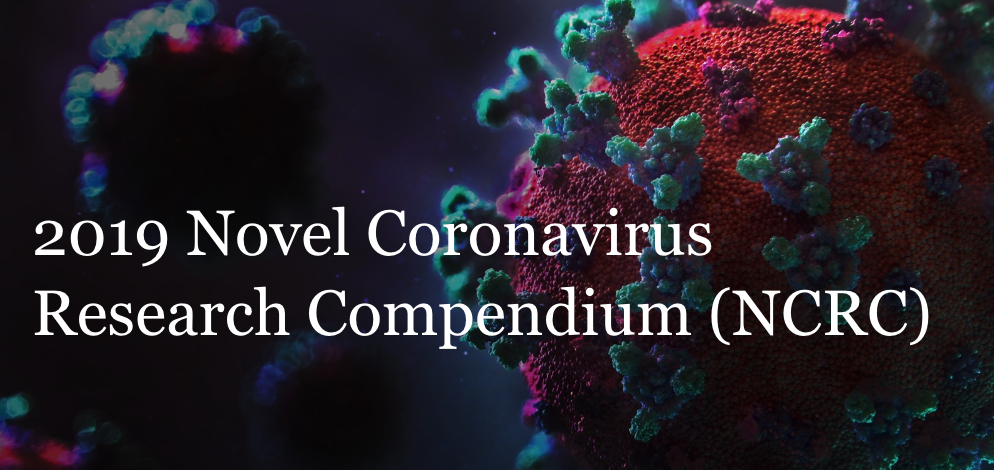Phase 1–2 Trial of a SARS-CoV-2 Recombinant Spike Protein Nanoparticle Vaccine
This article has been Reviewed by the following groups
Discuss this preprint
Start a discussion What are Sciety discussions?Listed in
- Evaluated articles (ScreenIT)
- Evaluated articles (NCRC)
- High interest articles (NCRC)
Abstract
Article activity feed
-

SciScore for 10.1101/2020.08.05.20168435: (What is this?)
Please note, not all rigor criteria are appropriate for all manuscripts.
Table 1: Rigor
Institutional Review Board Statement Consent: All participants provided written informed consent prior to trial enrollment.
IRB: The trial protocol was approved by the Alfred Hospital Human Research Ethics Committee (Melbourne, Australia) and performed in accordance with the International Conference on Harmonization, Good Clinical Practice guidelines.Randomization As a safety measure, six participants were initially randomly assigned (1:1) into the two-dose NVX-CoV2373/Matrix-M1 groups, vaccinated in an open-label manner, and observed for reactogenicity through 48 hours. Blinding Thereafter, the remaining participants (n=125) were randomly assigned (1:1:1:1:1) in a blinded manner to one of five … SciScore for 10.1101/2020.08.05.20168435: (What is this?)
Please note, not all rigor criteria are appropriate for all manuscripts.
Table 1: Rigor
Institutional Review Board Statement Consent: All participants provided written informed consent prior to trial enrollment.
IRB: The trial protocol was approved by the Alfred Hospital Human Research Ethics Committee (Melbourne, Australia) and performed in accordance with the International Conference on Harmonization, Good Clinical Practice guidelines.Randomization As a safety measure, six participants were initially randomly assigned (1:1) into the two-dose NVX-CoV2373/Matrix-M1 groups, vaccinated in an open-label manner, and observed for reactogenicity through 48 hours. Blinding Thereafter, the remaining participants (n=125) were randomly assigned (1:1:1:1:1) in a blinded manner to one of five vaccine groups according to pregenerated randomization schedules without stratification (Fig. 1). Power Analysis Statistical Analysis: The sample size for the first-in-human trial was based on clinical and practical considerations, not on a formal statistical power calculation. Sex as a biological variable Eligible participants were healthy men and non-pregnant women 18 to 59 years of age with a body mass index 17 to 35 kg/m2. Table 2: Resources
Software and Algorithms Sentences Resources Immunogenicity Assessments: For the Day 35 primary analysis reported herein, immunogenicity assessments included an anti-spike immunoglobulin G (IgG) ELISA (Days 0, 7, 21, 28, and 35), a wild-type virus microneutralization assay (MN) with an inhibitory concentration of > 99% (MN IC>99) (Days 0, 21, and 35), and intracellular cytokine staining of antigen-specific CD4+ T cells (Days 0 and 28). Immunogenicity Assessmentssuggested: NoneResults from OddPub: We did not detect open data. We also did not detect open code. Researchers are encouraged to share open data when possible (see Nature blog).
Results from LimitationRecognizer: We detected the following sentences addressing limitations in the study:Trial limitations include the length of time of safety observations and measured immune responses, as safety in the face of exposure to virus infection and durability of responses for SARs-CoV-2 vaccines will be of great interest. Previous experience with a full-length Ebola glycoprotein nanoparticle vaccine adjuvanted with Matrix-M1 suggests that vaccine-specific immune responses may be detected out to 1 year.26 Although in recent nonclinical studies (Smith, submitted),8 animals immunized and challenged with live virus did not exhibit features of vaccine-enhanced disease, careful safety monitoring in the context of human efficacy trials will need to be implemented. Additionally, this trial was performed in a healthy population of adults aged 18-59 years of age without significant comorbid disease or known immunocompromising conditions. The populations at greatest risk of serious COVID-19 include people with comorbidities and older adults, and planned vaccine evaluations will address these populations. Notably, recent clinical trials evaluating a recombinant seasonal influenza hemagglutinin nanoparticle vaccine adjuvanted with Matrix-M1 in nearly 2,300 adults 65 years of age or older with comorbidities suggested that the combination of Matrix-M1 with nanoparticle vaccine were both safe and could induce robust functional antibody and T-cell responses in older adults including those with a modest level of comorbidities.25,27 Taken together, the adjuvanted, recombinant, full-len...
Results from TrialIdentifier: We found the following clinical trial numbers in your paper:
Identifier Status Title NCT04368988 Active, not recruiting Evaluation of the Safety and Immunogenicity of a SARS-CoV-2 … Results from Barzooka: We did not find any issues relating to the usage of bar graphs.
Results from JetFighter: We did not find any issues relating to colormaps.
Results from rtransparent:- Thank you for including a conflict of interest statement. Authors are encouraged to include this statement when submitting to a journal.
- Thank you for including a funding statement. Authors are encouraged to include this statement when submitting to a journal.
- No protocol registration statement was detected.
-
-

Our take
This was a successful phase 1 trial, available as a preprint and thus not yet peer reviewed, with few adverse events and robust immune responses, comparable to or even stronger than those of recovered COVID-19 patients. The NVX-CoV2723 recombinant nanoparticle vaccine by Novavax warrants further investigation in a phase 2 trial due to these promising results.
Study design
randomized-controlled-trial
Study population and setting
This phase 1/2 trial took place in Melbourne, Australia and examined the safety and immunogenicity of the NVX-CoV2373 vaccine developed by Novavax. NVX-CoV2723 is a recombinant nanoparticle vaccine comprised of the SARS-CoV-2 spike protein, which binds to the human ACE2 receptor. 134 healthy males and females between the ages of 18 and 59 were randomized into five groups …
Our take
This was a successful phase 1 trial, available as a preprint and thus not yet peer reviewed, with few adverse events and robust immune responses, comparable to or even stronger than those of recovered COVID-19 patients. The NVX-CoV2723 recombinant nanoparticle vaccine by Novavax warrants further investigation in a phase 2 trial due to these promising results.
Study design
randomized-controlled-trial
Study population and setting
This phase 1/2 trial took place in Melbourne, Australia and examined the safety and immunogenicity of the NVX-CoV2373 vaccine developed by Novavax. NVX-CoV2723 is a recombinant nanoparticle vaccine comprised of the SARS-CoV-2 spike protein, which binds to the human ACE2 receptor. 134 healthy males and females between the ages of 18 and 59 were randomized into five groups to test 5 and 25ug doses of the vaccine with and without Matrix-M1 saponin-based adjuvant. Participants received vaccine doses on day 0 and day 21 in alternating deltoids, and data collection ended on day 35 for analysis.
Summary of main findings
Reactogenicity to the vaccine was mild, and it was generally well-tolerated by most participants. The use of the M1 adjuvant increased reactogenicity, but symptoms reported were generally ≤ grade 1. Adverse events usually lasted for ≤ 2 days. Strong anti-spike IgG antibody responses were detected by day 21, and even more so by day 28 (after the second vaccination). Neutralizing antibodies followed a similar trend, with the adjuvant vaccine showing a strong correlation between neutralizing antibody titers and anti-spike IgG. Following the second vaccination, these levels exceeded those found in convalescent serum from patients hospitalized due to SARS-CoV-2. Finally, antigen specific CD4+ T-cells were generated and produced inflammatory cytokines upon spike protein stimulation.
Study strengths
This study has several strengths, including the fact that it is an alternative vaccine strategy compared to other COVID-19 vaccine candidate front-runners. Multiple dose groups were employed, and the use of adjuvant showed promising results for dose-sparing and vaccine efficacy. Antibody titers as well as T-cell responses were measured in this trial, and metrics were comparable to those from convalescent serum from patients requiring medical care for SARS-CoV-2.
Limitations
This trial only focused on a short observation time for safety and immunogenicity data, but such is the nature of phase 1 trial design. The population studied in this trial had no Black participants, and few non-white participants in general. Therefore, this particular trial did not encompass some of the most vulnerable and hard-hit groups in the COVID-19 pandemic.
Value added
First results from phase 1/2 trial of the NVX-CoV2373 recombinant nanoparticle vaccine.
-


